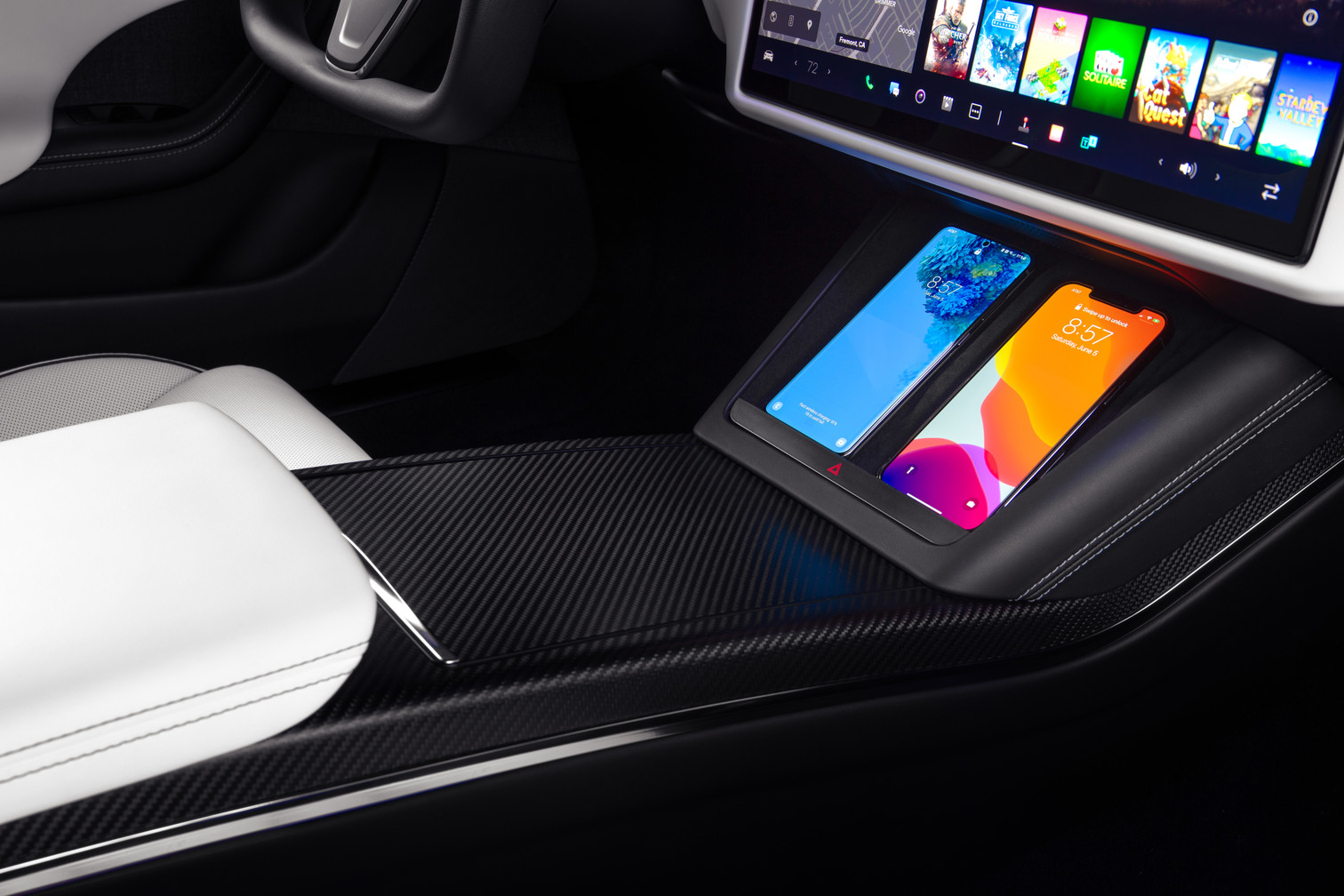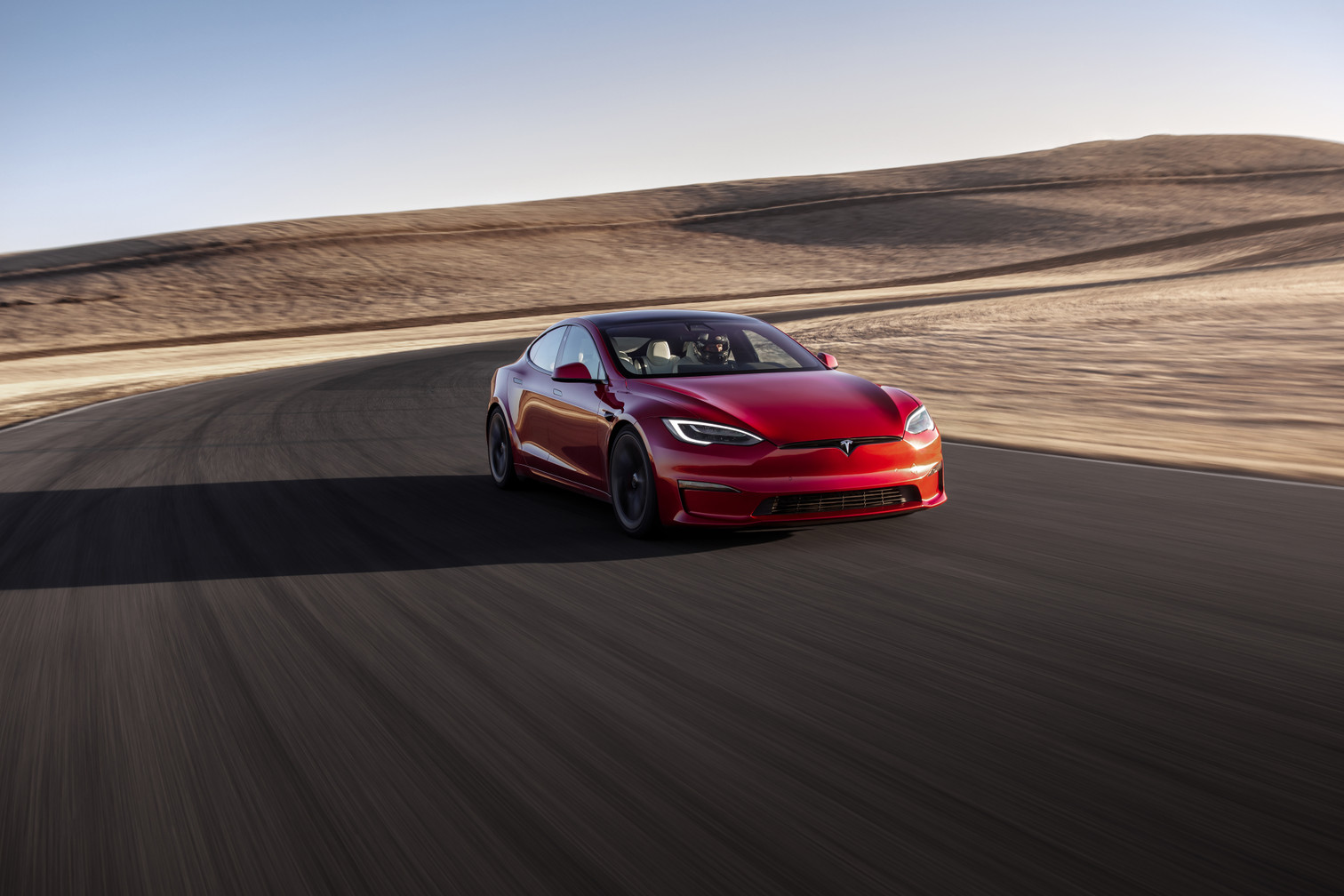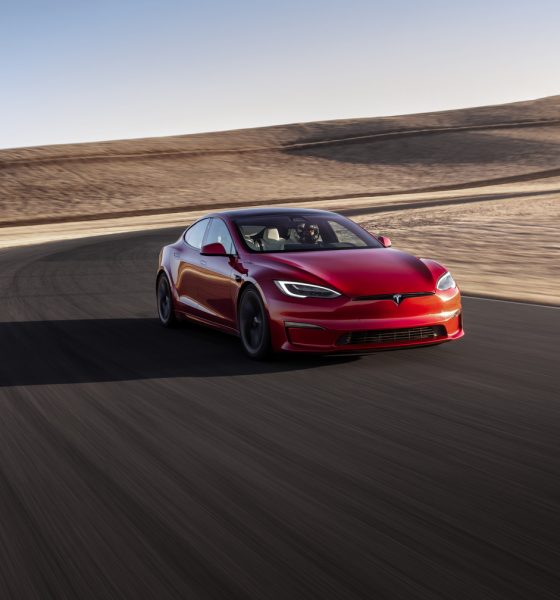Tesla (NASDAQ: TSLA) unveiled its new Plaid Model S last night and rolled out deliveries to those who have been waiting patiently to take delivery of the “Refreshed” version of the company’s flagship sedan. While there were several takeaways from the event that took place at Tesla’s Fremont Factory, Oppenheimer analyst Colin Rusch indicated that his biggest idea from the delivery event was Tesla’s donning of a new, fully autonomous era, and the company is prepping itself, along with its owners, for a future that requires little to no intervention from the driver.
Rusch, who is one of Tesla’s biggest bulls on Wall Street with a massive $1,080 price target, appeared on CNBC’S Squawk Box earlier today to talk about the event and what the major takeaways are. While many automotive enthusiasts, analysts, and spectators were more focused on the lightning-fast performance and 390-mile range of the Model S Plaid, Rusch took away Tesla’s installation of several new features that are evidently preparing drivers to become passengers. Tesla’s Full Self-Driving suite has made tremendous improvements ever since the company rolled out the FSD Beta program in October 2020. While the Beta program features a small group of members, Tesla eventually plans to roll out a more robust version of FSD to owners everywhere. The question is: What will drivers do when they’re not required to pay attention to road conditions at all times?
This is a question Tesla has thought long and hard about, and the evidence of that lies within the software capabilities of the new Model S Plaid. It was revealed several weeks ago that Tesla would be installing AMD processors and GPSs in the Model S and X, giving the two vehicles “PS5 level entertainment computing power,” according to CEO Elon Musk. Musk hinted toward new gamification features in the past. Still, it really came down to the company’s ability to provide robust and well-rounded entertainment and infotainment systems to drivers and passengers. After all, if you’re not going to be driving the vehicle, you’re going to need something to do.
Effectively, this is what catalyzed Rusch’s idea that Tesla is preparing to bring in self-driving cars. While speaking to Squawk Box during the interview this morning, Rusch detailed Tesla’s event last night, focusing on the idea that self-driving, and not blistering performance, is what the event was really the essence of the event.
Rusch said that Tesla’s domination as the most-savvy tech company in terms of powertrain and product design in the automotive sector is important, and that was accomplished last night with the event. However, Rusch maintains that his price target is really based on the company’s ability to deliver autonomous vehicles, and the event proved to him that Tesla is moving in that direction.
Credit: Tesla
“What we saw last night was that they’re preparing for full autonomy in terms of the user experience within the vehicle,” Rusch said. “And, that’s important to see them migrating towards that full autonomous experience inside the car. Between the backseats, the display, and some of the other features within the display. This is preparing folks to not really have their hands on the wheel,” Rusch said.
“What we saw last night was that they’re preparing for full autonomy in terms of the user experience within the vehicle. That’s important,” says Oppenheimer analyst Colin Rusch on @Tesla‘s Model S Plaid $TSLA pic.twitter.com/A6DNgmIVLu
— Squawk Box (@SquawkCNBC) June 11, 2021
Rusch holds an incredible #6 rating on TipRanks out of 7,547 analysts. His price target on TSLA stands at $1,080, and Rusch has a “Buy” rating on the automaker’s stock.
Disclosure: Joey Klender is a TSLA Shareholder.

News
Tesla FSD fleet is nearing 7 billion total miles, including 2.5 billion city miles
As can be seen on Tesla’s official FSD webpage, vehicles equipped with the system have now navigated over 6.99 billion miles.

Tesla’s Full Self-Driving (Supervised) fleet is closing in on almost 7 billion total miles driven, as per data posted by the company on its official FSD webpage.
These figures hint at the massive scale of data fueling Tesla’s rapid FSD improvements, which have been quite notable as of late.
FSD mileage milestones
As can be seen on Tesla’s official FSD webpage, vehicles equipped with the system have now navigated over 6.99 billion miles. Tesla owner and avid FSD tester Whole Mars Catalog also shared a screenshot indicating that from the nearly 7 billion miles traveled by the FSD fleet, more than 2.5 billion miles were driven inside cities.
City miles are particularly valuable for complex urban scenarios like unprotected turns, pedestrian interactions, and traffic lights. This is also the difference-maker for FSD, as only complex solutions, such as Waymo’s self-driving taxis, operate similarly on inner-city streets. And even then, incidents such as the San Francisco blackouts have proven challenging for sensor-rich vehicles like Waymos.
Tesla’s data edge
Tesla has a number of advantages in the autonomous vehicle sector, one of which is the size of its fleet and the number of vehicles training FSD on real-world roads. Tesla’s nearly 7 billion FSD miles then allow the company to roll out updates that make its vehicles behave like they are being driven by experienced drivers, even if they are operating on their own.
So notable are Tesla’s improvements to FSD that NVIDIA Director of Robotics Jim Fan, after experiencing FSD v14, noted that the system is the first AI that passes what he described as a “Physical Turing Test.”
“Despite knowing exactly how robot learning works, I still find it magical watching the steering wheel turn by itself. First it feels surreal, next it becomes routine. Then, like the smartphone, taking it away actively hurts. This is how humanity gets rewired and glued to god-like technologies,” Fan wrote in a post on X.
News
Tesla starts showing how FSD will change lives in Europe
Local officials tested the system on narrow country roads and were impressed by FSD’s smooth, human-like driving, with some calling the service a game-changer for everyday life in areas that are far from urban centers.

Tesla has launched Europe’s first public shuttle service using Full Self-Driving (Supervised) in the rural Eifelkreis Bitburg-Prüm region of Germany, demonstrating how the technology can restore independence and mobility for people who struggle with limited transport options.
Local officials tested the system on narrow country roads and were impressed by FSD’s smooth, human-like driving, with some calling the service a game-changer for everyday life in areas that are far from urban centers.
Officials see real impact on rural residents
Arzfeld Mayor Johannes Kuhl and District Administrator Andreas Kruppert personally tested the Tesla shuttle service. This allowed them to see just how well FSD navigated winding lanes and rural roads confidently. Kruppert said, “Autonomous driving sounds like science fiction to many, but we simply see here that it works totally well in rural regions too.” Kuhl, for his part, also noted that FSD “feels like a very experienced driver.”
The pilot complements the area’s “Citizen Bus” program, which provides on-demand rides for elderly residents who can no longer drive themselves. Tesla Europe shared a video of a demonstration of the service, highlighting how FSD gives people their freedom back, even in places where public transport is not as prevalent.
What the Ministry for Economic Affairs and Transport says
Rhineland-Palatinate’s Minister Daniela Schmitt supported the project, praising the collaboration that made this “first of its kind in Europe” possible. As per the ministry, the rural rollout for the service shows FSD’s potential beyond major cities, and it delivers tangible benefits like grocery runs, doctor visits, and social connections for isolated residents.
“Reliable and flexible mobility is especially vital in rural areas. With the launch of a shuttle service using self-driving vehicles (FSD supervised) by Tesla in the Eifelkreis Bitburg-Prüm, an innovative pilot project is now getting underway that complements local community bus services. It is the first project of its kind in Europe.
“The result is a real gain for rural mobility: greater accessibility, more flexibility and tangible benefits for everyday life. A strong signal for innovation, cooperation and future-oriented mobility beyond urban centers,” the ministry wrote in a LinkedIn post.
News
Tesla China quietly posts Robotaxi-related job listing
Tesla China is currently seeking a Low Voltage Electrical Engineer to work on circuit board design for the company’s autonomous vehicles.

Tesla has posted a new job listing in Shanghai explicitly tied to its Robotaxi program, fueling speculation that the company is preparing to launch its dedicated autonomous ride-hailing service in China.
As noted in the listing, Tesla China is currently seeking a Low Voltage Electrical Engineer to work on circuit board design for the company’s autonomous vehicles.
Robotaxi-specific role
The listing, which was shared on social media platform X by industry watcher @tslaming, suggested that Tesla China is looking to fill the role urgently. The job listing itself specifically mentions that the person hired for the role will be working on the Low Voltage Hardware team, which would design the circuit boards that would serve as the nervous system of the Robotaxi.
Key tasks for the role, as indicated in the job listing, include collaboration with PCB layout, firmware, mechanical, program management, and validation teams, among other responsibilities. The role is based in Shanghai.
China Robotaxi launch
China represents a massive potential market for robotaxis, with its dense urban centers and supportive policies in select cities. Tesla has limited permission to roll out FSD in the country, though despite this, its vehicles have been hailed as among the best in the market when it comes to autonomous features. So far, at least, it appears that China supports Tesla’s FSD and Robotaxi rollout.
This was hinted at in November, when Tesla brought the Cybercab to the 8th China International Import Expo (CIIE) in Shanghai, marking the first time that the autonomous two-seater was brought to the Asia-Pacific region. The vehicle, despite not having a release date in China, received a significant amount of interest among the event’s attendees.










